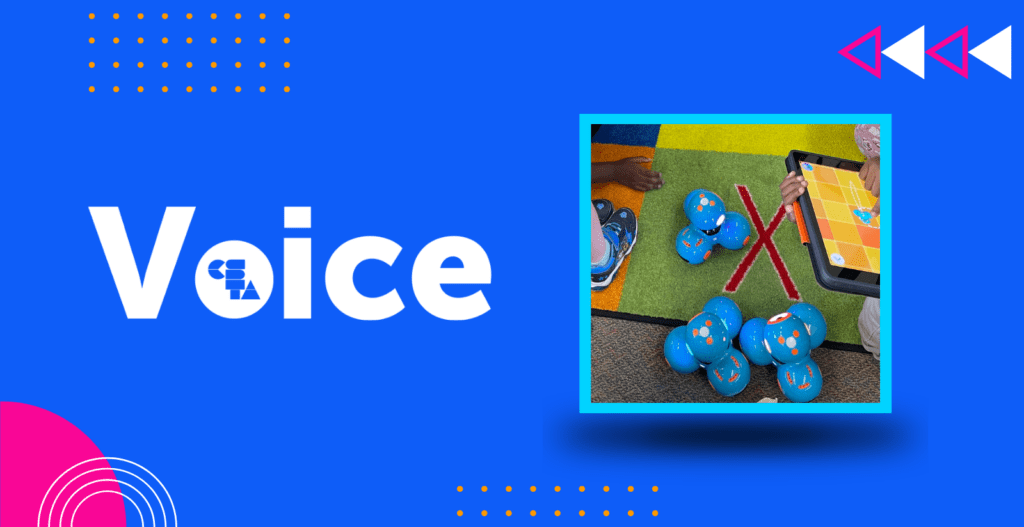By Shakara Lawrence, Ed.S.
As an Instructional Technology Specialist, I’ve had the privilege of integrating robotics into classrooms to inspire students and make computer science more engaging. Using Dash Robots and Marty the Robot, I introduce students to programming, problem-solving, and computational thinking in a way that feels more like play than work. Research shows that robotics education enhances Science, Technology, Engineering, and Math engagement, critical thinking, and problem-solving skills (Eguchi, 2014).
Why Robotics?
Many students perceive computer science as an abstract or intimidating subject. Robotics changes that. By interacting with tangible, responsive robots, students can see their code in action, gaining an immediate understanding of how programming translates into real-world movement and behavior. Studies indicate that robotics fosters engagement, creativity, and resilience, making it an effective tool for project-based learning (Sullivan & Bers, 2018).
Dash Robots: A Fun Introduction to Coding
Dash Robots are designed for younger students or beginners in coding. In my sessions, students work in small teams to navigate a maze using directional commands. This introduces students to fundamental programming concepts such as sequences and conditional logic, all while keeping them engaged through hands-on interaction. Students quickly learn that debugging is part of the creative process, reinforcing perseverance and logical thinking (Grover & Pea, 2013).
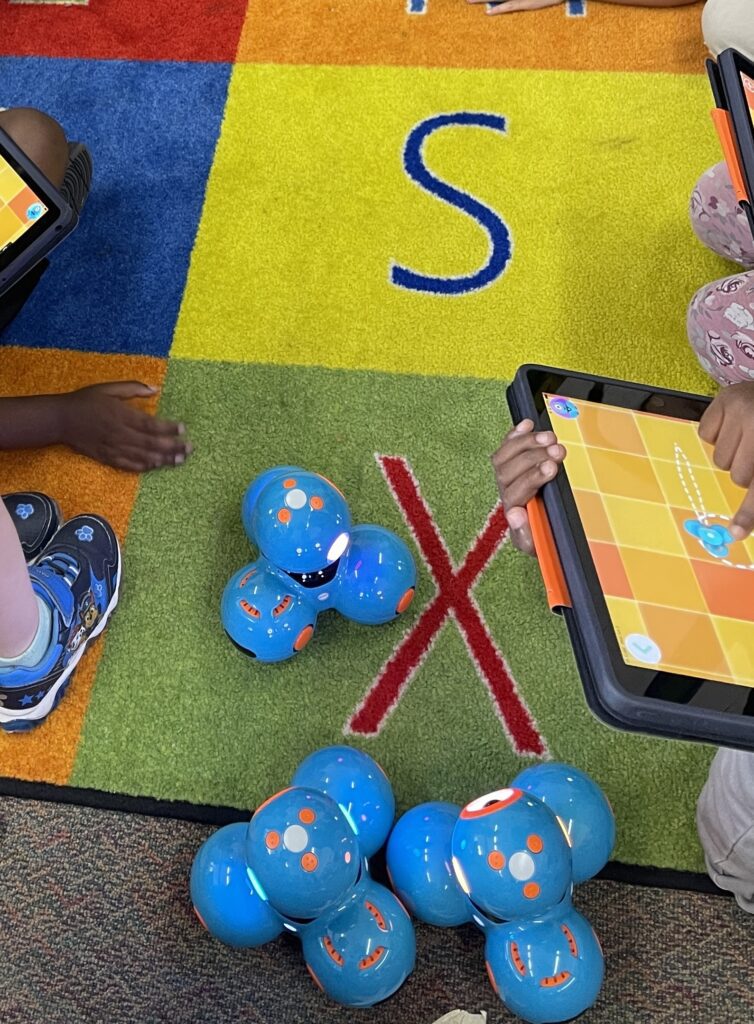
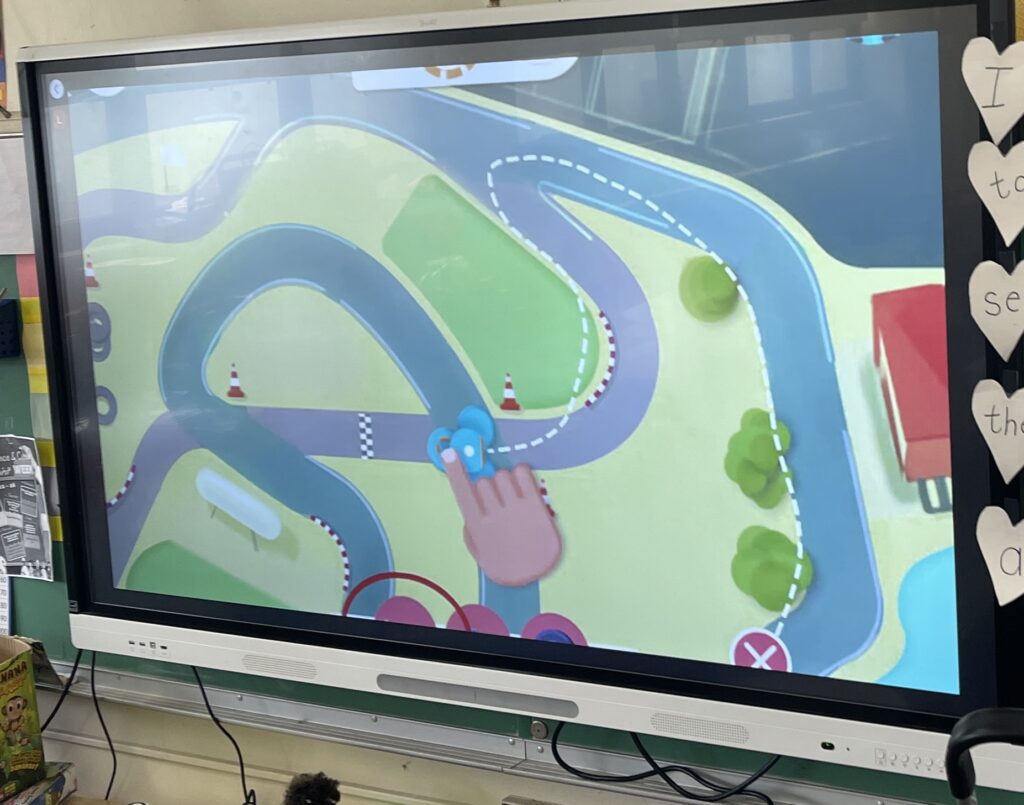
Marty the Robot: Advancing Computational Thinking
For students ready for a more advanced challenge, Marty the Robot provides an excellent introduction to sensors and AI-driven interactions. Unlike Dash, Marty had walking mechanics, allowing students to explore bipedal movement, real-world physics, and sensor-based automation. I guide students through activities such as:
- Programming Marty’s movements which helps them understand angles, speed, and motion control
- Sensor-based programming, where Marty responds to real-world input (e.g., waving when detecting motion)
- AI Exploration, where students experiment with machine learning models to train Marty to recognize gestures or voice commands
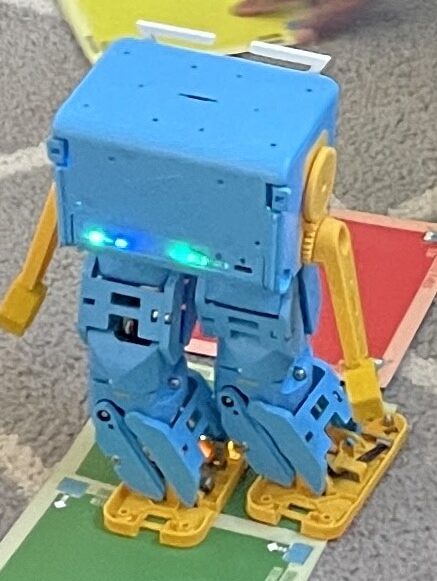
Beyond Coding: Real-World Skills
Through robotics programs like these, students develop essential 21st-century skills, including:
- Collaboration: Working in teams to solve challenges
- Critical thinking: Debugging and refining their programs
- Perseverance: Learning that failure is part of the innovation process
By the end of my robotics lessons, students aren’t just coding robots—they’re building confidence in their ability to problem-solve, innovate, and think like computer scientists. Teaching with Dash and Marty has reaffirmed my belief that robotics is a game-changer for STEM education, bridging the gap between theoretical coding skills and real-world applications (Benitti, 2012).
By integrating robotics into classrooms, we are empowering the next generation of computer scientists—one line of code at a time.
References
Benitti, F. B. V. (2012). Exploring the educational potential of robotics in schools: A systematic review. Computers & Education, 58(3), 978-988.
Eguchi, A. (2014). Robotics as a learning tool for educational transformation. Proceedings of the 4th International Workshop Teaching Robotics, Teaching with Robotics (TRTWR).
Falkner, K., Vivian, R., & Falkner, N. J. (2019). The role of games in computer science education. ACM Transactions on Computing Education (TOCE), 19(2), 1-23.
Grover, S., & Pea, R. (2013). Computational thinking in K–12. Educational Researcher, 42(1), 38-43.
Sullivan, A., & Bers, M. U. (2018). Dancing robots: Integrating art, music, and robotics in K–12 classrooms. International Journal of Child-Computer Interaction, 17, 20-29.
Weintrop, D., Holbert, N., Wilensky, U., & Horn, M. (2016). Computational thinking in constructionist video games. Educational Technology & Society, 19(3), 126-140.
About the Author
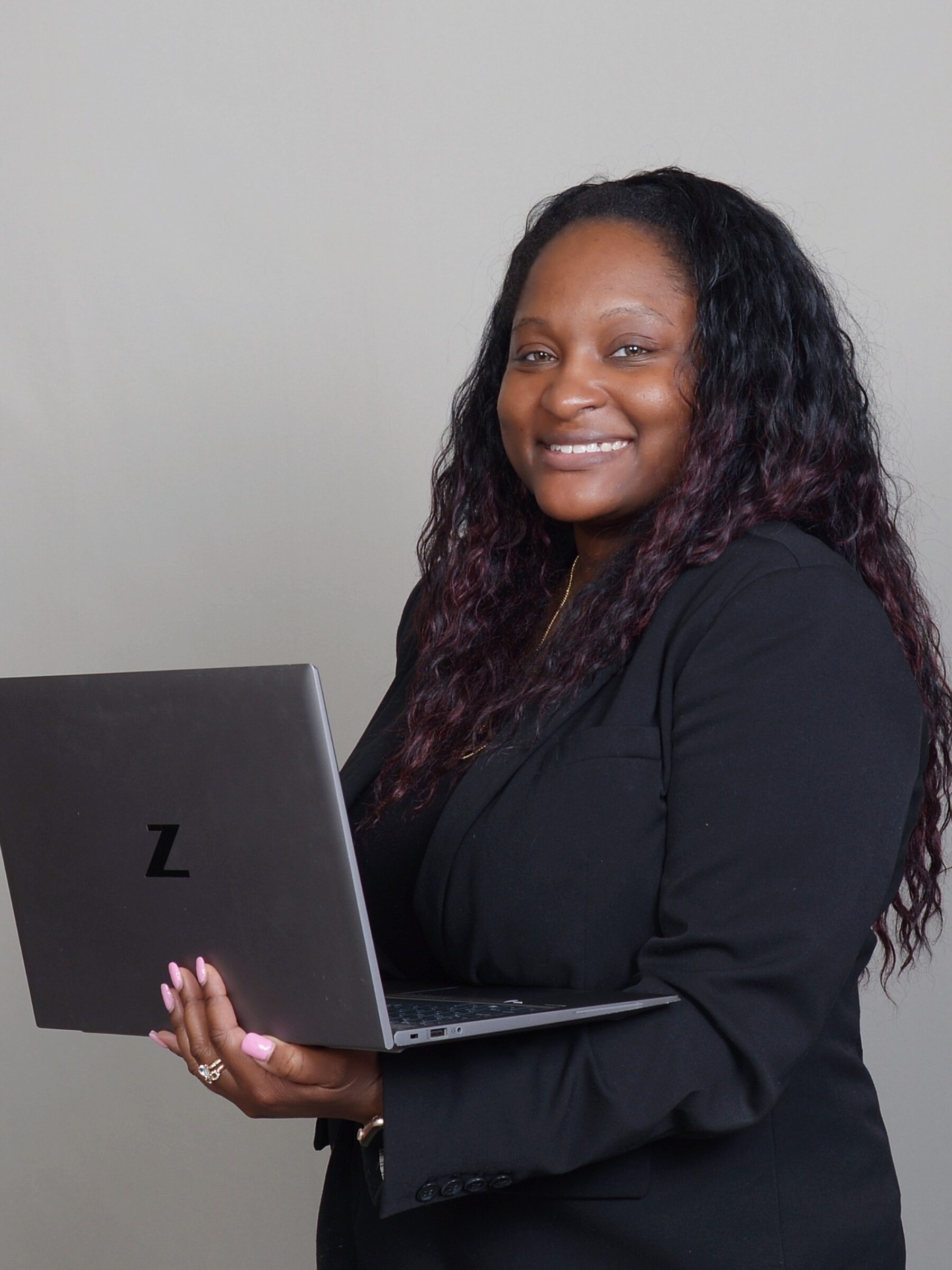
Shakara Lawrence is an Instructional Technology Specialist with Norfolk Public Schools. She has over 20 years of experience in training and development and has taught K-12 Social Studies, Gifted Education, and English to Speakers of Other Languages. Shakara has an Educational Specialist degree in Educational Leadership from Liberty University and is an Apple Learning Coach.

